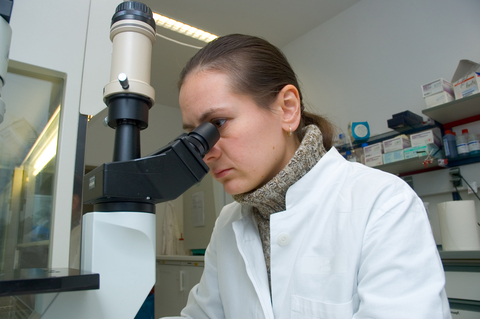Bacteria cell wall mopping agents could treat chronic inflammatory diseases like Type 2 diabetes

The University of Manchester has reported that Professor Resia Pretorius from Stellenbosch University in South Africa and Professor Douglas Kell from the University of Manchester have conducted a series of studies that are drastically changing the way scientists think about the effect bacteria have on a number of diseases including Alzheimer’s disease, Parkinson’s disease, sepsis, rheumatoid arthritis, and most recently Type 2 diabetes (T2D).
Previously, Resia Pretorius and Douglas Kell had established that these chronic inflammatory diseases also have a microbial origin. Douglas Kelli said “If the bacteria were active, or replicating, as in the case of infectious diseases, we would have known all about that. But the microbes are not replicating, they’re mainly actually dormant.”
Because their dormant nature meant that they did not manifest under standard microbial test conditions, bacteria were previously thought to be absent from human blood, consistent with the view that blood is “sterile.” However, high levels of iron in blood, which is typical of inflammatory diseases, can effectively bring these bacteria back to life. Previous research suggested that under these conditions, the bacteria start replicating and secreting lipopolysaccharides (LPS), leading to increased inflammation.
The one thing these chronic diseases have in common is constantly elevated levels of inflammation. Resia Pretorius and Douglas Kell had already established that anomalous amyloidogenic blood clotting, a cause of inflammation, is linked to and can be experimentally induced by bacterial cell wall constituents such as LPS and Lipoteichoic acid (LTA). These are cell wall components of Gram-negative and Gram-positive bacteria, respectively.
These coagulopathies (adverse blood clotting) are also typical of inflammatory diseases and the researchers have long shown that they lead to amyloid formation, where the blood clotting proteins, called fibrinogen, are structurally deformed from a-helixes to a flat b-sheet-like structures, potentially leading to cell death and neurodegeneration.
Douglas Kell said “If the bacteria were active, or replicating, as in the case of infectious diseases, we would have known all about that. But the microbes are not replicating, they’re mainly actually dormant.”
As a result, the fibrin fibres of blood clots in diseased individuals are distinctly different from those of healthy individuals. This can be visualised microscopically and is discussed in various publications from the group. Resia Pretorius said “In normal blood clots, these fibres would look like a bowl of spaghetti. But in diseased individuals, their blood clots look matted with large fused and condensed fibres. They can also be observed with special stains that fluoresce in the presence of amyloid.”
The researchers found that this changed clot structure is present in all inflammatory conditions studied, now including Type 2 diabetes. But they wanted to know what was the link between this abnormal clot formation, bacteria, LPS and TLA, and whether there were any molecules that may “mop up” LPS or LTA and that might be circulating in the blood of people with inflammatory diseases.
In their 2017 study, recently published in Scientific Reports, Resia Pretorius and Douglas Kell, along with MSc student Sthembile Mbotwe from the University of Pretoria, investigated the effect of LPS-binding protein (LBP), which is normally produced by all individuals. They added LBP to blood from people with Type 2 diabetes (and also to healthy blood after the addition of LPS). Previously they had showed that LPS causes abnormal clot formation when added to healthy blood, and that this could be reversed by LBP. In this publication they showed that LBP could also reverse the adverse clot structure in Type 2 diabetes blood. This process was confirmed by both scanning electron microscopy and super-resolution confocal microscopy. The conclusion is clear; bacterial LPS is a significant player in the development and maintenance of Type 2 diabetes and its disabling sequelae. Resia Pretorius said “In an inflamed situation, large amounts of LPS probably prevent LBP from doing its work properly.”
The researchers concluded “We now have a considerable amount of evidence, much of it new, that in contrast to the current strategies for attacking T2D, the recognition that it involves dormant microbes, chronic inflammatory processes and coagulopathies, offer new opportunities for treatment.”








